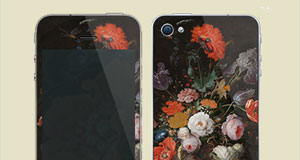Kimono, anonymous, 1930 - 1940
weaving, h 132cm × w 132cm More details
Kimonos: Mirrors of a Man’s Life. The kimonos on view here afford a glimpse into the lives of Japanese men from around the 1910s to the 1950s, from childhood to adulthood. This was a period of great change for Japan, marked by increasing industrialization and political conflicts culminating in the Second World War. Life modernized, technology advanced, and people took up new hobbies. Traditionally, men’s outer clothing tended to be reserved and a solid colour. Clothes could nevertheless also be a medium for highly unusual depictions which, however, were not visible to everyone. While motifs adorned the exterior of children’s garments, they were hidden from view in those worn by adult men. The decoration was found on the inside: on a long under garment, or the lining of a jacket (haori). This concealed imagery divulges the lives of the owners at the beginning of the 20th century. Childhood. A kimono marked events and stages in a man’s life. The kimonos on the top row (except the two everyday ones at either end) were worn by boys during the religious ceremony of miyamairi, namely an infant’s first visit to a Shinto shrine. This event followed a prescribed ritual and was an important and formative moment in the life of a Japanese man. Clothing for boys enveloped them in images that were to become part of their identity. The depictions included motifs that were considered gender and age appropriate: toys, manly hobbies, stories of heroic battles, technology, and so forth. Broader themes such as military conflicts and nationalism also filtered into children’s daily lives at an early stage. The textile designs of some kimonos combined traditional playthings with toy guns and tanks. Adulthood. What does a kimono tell about its owner and his life? Some men chose subjects from classical culture, such as No or Kabuki theatre, while others preferred themes from contemporary life, such as gramophone records or the new popular sport of baseball. Thus, these garments were a canvas for personal choices, but also for political propaganda and nationalistic messages. Some representations are eccentric or even erotic. Others are more general and linked to political events. All aspects of a man’s inner life are touched on. Portraits of beautiful women and playful dogs contrast with images of war, celebrating victories in China. As these representations were under the outer garments, they remained hidden from the outside world and were thus seen only by the kimono’s owner and his intimates.


